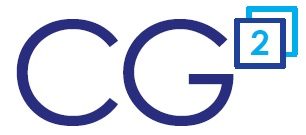Improved promotion Effectiveness and Efficiency is an important goal for CG companies that implement a trade promotion management solution. We use these terms often, so it’s important to understand the differences between the two terms.
Promotion Effectiveness:
Promotion effectiveness describes the promotion from a sales perspective. Promotion effectiveness measures how much extra volume is generated by the promotion. To measure the deal’s impact, it must be compared a point-of-reference we call a baseline. Incremental volume is sometimes expressed as a lift index, or as percent lift versus the baseline.
Example: You normally sell 1,500 cases of an item every week. During the promotion week you sold 2,000 cases. If you still sold 1,500 cases in the weeks after the promotion, then your incremental volume is 500 cases.
Total promotional volume minus baseline volume = incremental volume
2,000 total cases – 1,500 case baseline = 500 incremental cases
This formula has been simplified. As you may have guessed, things aren’t as simple in the real world. For example, your promotion may run several weeks and your baseline may be different each week because of seasonality. You may also have some consumer pantry loading, and/or the retailer may have back-room and/or warehouse loading. We call this the post-promotion forward-buy effect. Any negative sales impact before or after the promotion must be subtracted from the promotion’s incremental volume.
Challenge #1: What’s a good baseline, and how do I calculate it? This is an age-old question for CG, and the topic of a future blog. For the purpose of understanding promotion effectiveness, we just need to use a baseline to measure the promotion’s impact on sales.
Challenge #2: The definition of incremental is different for manufacturers and retailers. A manufacturer may consider a promotion effective and generating incremental volume , even if sales of a competitor’s items go down by the same amount of the incremental volume. However, a retailer’s perspective is the entire category. A retailer may consider a brand’s promotion effective only if it also generates incremental sales for the category.
Promotion Efficiency:
Promotion efficiency describes the promotion from a financial perspective. Promotion efficiency measures how much extra profit is generated by the promotion. To measure the deal’s impact, you start with measuring the promotion’s effectiveness. You need to estimate how much extra volume was generated. The approach is to then do an incremental financial analysis by comparing the profit you would have made without the promotion, to the profit you’ll make with the promotion.
Example: Let’s use the example above, but add some additional financial information.
- Our case price is $10.00, and our profit margin is 30%. We make $3/case variable profit.
- Our variable profit on 1,000 baseline cases is $3,000. (1,000 cases times $10 per case price times 30% variable margin)
- We sold 2,000 cases, and made $6,000 before trade promotion allowances and fees. (2,000 cases times $10 per case price times 30% variable margin)
- The promotion cost us $4,000. 2,000 cases times $1.5/case plus $1,000 ad fee.
- We made $2,000 on the promotion ($6,000 variable profit minus $4,000 promotional costs)
Total profit from the deal minus profit we could make on baseline volume = Incremental profit
$2,000 profit made with the deal minus $3,000 profit we could make without the deal = $-1,000 Incremental profit
Challenge #1: What if we don’t know the promotion’s effectiveness? If you don’t estimate how much extra volume a promotion generates, then you can’t estimate promotion efficiency.
Challenge #1: What if you don’t capture actual trade spending by promotional event? If you don’t capture promotional costs by event, you can’t perform true incremental post-promotion analysis, and you can’t determine a promotion’s efficiency.
The promotion example in this blog shows a promotion that was effective, but was not efficient. This hypothetical promotion generated an extra 500 cases of sales, but the brand’s profitability was $1,000 less with the promotion than if this brand did not run the promotion and sold 500 fewer cases.
The first step to improving trade promotion effectiveness and efficiency is to measure it. Start with promotion effectiveness to learn which deals generate more incremental volume. Use promotion efficiency to learn which deals generate the best financial results (or the least negative). Temper these insights with real-world feedback from all CG Stakeholders, including sales, brokers, and retailers.
If you use NetSuite as your ERP, take a look at our native SuiteApp, iTPM.
Alex Ring
President
